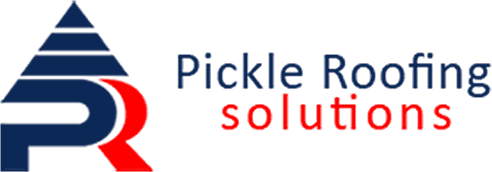Types of Roof Damage Covered by Insurance
When it comes to roof damage, not all types are treated equally by insurance companies. Understanding the types of damage that are typically covered can help homeowners navigate the claims process more effectively.
Hail Damage
Hail damage is one of the most common types of roof damage, especially in areas prone to severe weather. Hail can cause dents and cracks in roofing materials, leading to leaks and other problems. The extent of the damage can vary greatly, depending on the size and velocity of the hailstones.
Most homeowner's insurance policies cover hail damage, but the specifics can vary. Some policies may only cover the depreciated value of the roof, while others will cover the full cost of replacement. It's important to review your policy to understand what is covered.
Wind Damage
Wind damage is another common type of roof damage. High winds can lift and tear roofing materials, leading to leaks and structural damage. In severe cases, wind can even cause entire sections of the roof to be torn off.
Like hail damage, wind damage is typically covered by homeowner's insurance. However, some policies may have specific windstorm deductibles that apply. Again, it's important to review your policy to understand your coverage.
Fire Damage
Fire damage can be devastating, often resulting in the total loss of a roof. This can include damage from the fire itself, as well as damage caused by smoke and water used to extinguish the fire.
Fire damage is almost always covered by homeowner's insurance. However, the amount of coverage can depend on several factors, including the cause of the fire and the extent of the damage. It's important to contact your insurance company as soon as possible after a fire to begin the claims process.
Understanding Insurance Policy Terms and Conditions
Understanding the terms and conditions of your insurance policy is crucial when dealing with roof damage. This includes understanding your deductible, any exclusions that may apply, and how your insurance company calculates the value of your claim.
Deductibles and How They Apply to Roof Damage
A deductible is the amount you are responsible for paying out-of-pocket before your insurance coverage kicks in. For example, if your deductible is $1,000 and you have $5,000 in roof damage, you would pay the first $1,000 and your insurance would cover the remaining $4,000.
How deductibles apply to roof damage can vary. Some insurance companies have separate deductibles for wind/hail damage and all other perils. It's important to understand how your deductible applies to ensure you're prepared for any out-of-pocket costs.
Exclusions in Insurance Policies
Exclusions are specific situations or types of damage that are not covered by your insurance policy. For example, some policies may exclude damage caused by neglect or lack of maintenance.
Common exclusions for roof damage can include damage caused by mold, pests, or certain types of water damage. It's important to review your policy to understand what is and isn't covered.
Actual Cash Value vs. Replacement Cost
Actual Cash Value (ACV) and Replacement Cost are two methods insurance companies use to calculate the value of a claim. ACV takes into account the age and condition of your roof at the time of the damage, while Replacement Cost covers the cost to replace your roof with similar materials and quality, without considering depreciation.
The method your insurance company uses can have a significant impact on your claim. For example, if your roof is older, an ACV policy may only provide a small payout after accounting for depreciation. It's important to understand how your insurance company values your claim to ensure you're adequately covered.
Filing a Claim for Roof Damage
Filing a claim for roof damage can be a complex process. It's important to understand the steps involved and how to navigate the claims process effectively.
Steps to File a Roof Damage Claim
The first step in filing a claim for roof damage is to assess and document the damage. This can include taking photos or video of the damage, making a list of damaged items, and keeping any damaged materials for inspection.
Once you've documented the damage, the next step is to contact your insurance company to report the claim. They will guide you through the process and provide you with any necessary forms or documentation.
Navigating the Claims Process
Once you've filed your claim, an insurance adjuster will be assigned to inspect the damage and estimate the cost of repairs. It's important to be present during the inspection to ensure all damage is properly documented.
After the inspection, the adjuster will provide a settlement offer based on their estimate. If you agree with the offer, you can proceed with the repair process. If not, you may need to negotiate or seek a second opinion.
Common Challenges in Roof Damage Insurance Claims
While the insurance claims process is designed to help homeowners recover from damage, it can sometimes be a challenging process. Understanding common challenges can help you navigate the process more effectively.
Disputes Over Coverage
Disputes over coverage can arise for a variety of reasons. For example, your insurance company may disagree with your assessment of the damage, or they may interpret the terms of your policy differently.
If you find yourself in a dispute over coverage, it's important to stay calm and communicate effectively. Provide any documentation you have to support your claim and consider seeking legal advice if necessary.
Denial of Claims
Insurance claims can be denied for a variety of reasons. Common reasons include lack of coverage for the type of damage, failure to pay premiums, or failure to meet certain conditions of the policy.
If your claim is denied, it's important to understand why. Review the denial letter carefully and contact your insurance company for clarification if necessary. If you believe the denial is unjust, you may need to appeal the decision or seek legal advice.
Preventive Measures and Maintenance for Roof Longevity
While insurance can provide financial protection in the event of roof damage, the best strategy is to prevent damage from occurring in the first place. Regular inspections and maintenance can help extend the life of your roof and potentially avoid costly repairs.
Regular Roof Inspections
Regular roof inspections are crucial for identifying potential issues before they become major problems. This can include checking for signs of wear and tear, checking for loose or missing materials, and checking for signs of water damage.
While some inspections can be done by the homeowner, it's often beneficial to have a professional inspection at least once a year. A professional roofer can identify issues that may be missed by the untrained eye and provide recommendations for repairs or maintenance.
Proper Roof Maintenance
Proper roof maintenance can help extend the life of your roof and prevent damage. This can include regular cleaning, repairing minor damage promptly, and ensuring proper ventilation.
How you maintain your roof can also affect your insurance coverage. For example, if damage occurs as a result of neglect or lack of maintenance, your insurance company may deny your claim. Regular maintenance can help ensure your roof is in good condition and covered by your insurance.
Choosing the Right Roofing Material
The type of roofing material you choose can have a significant impact on the longevity and durability of your roof. Common types of roofing materials include asphalt shingles, metal roofing, and tile roofing, each with their own advantages and disadvantages.
The type of roofing material can also affect your insurance coverage. Some materials may be more resistant to certain types of damage, which can lower your insurance premiums. It's important to consider the impact of your roofing material on both your roof's performance and your insurance coverage.
At Pickle Roofing Solutions, we understand the challenges of dealing with roof damage and insurance claims. Our team of experienced professionals can help you navigate the process and ensure your roof is repaired or replaced promptly and effectively. Contact us today for a free consultation and let us help you protect your home.

